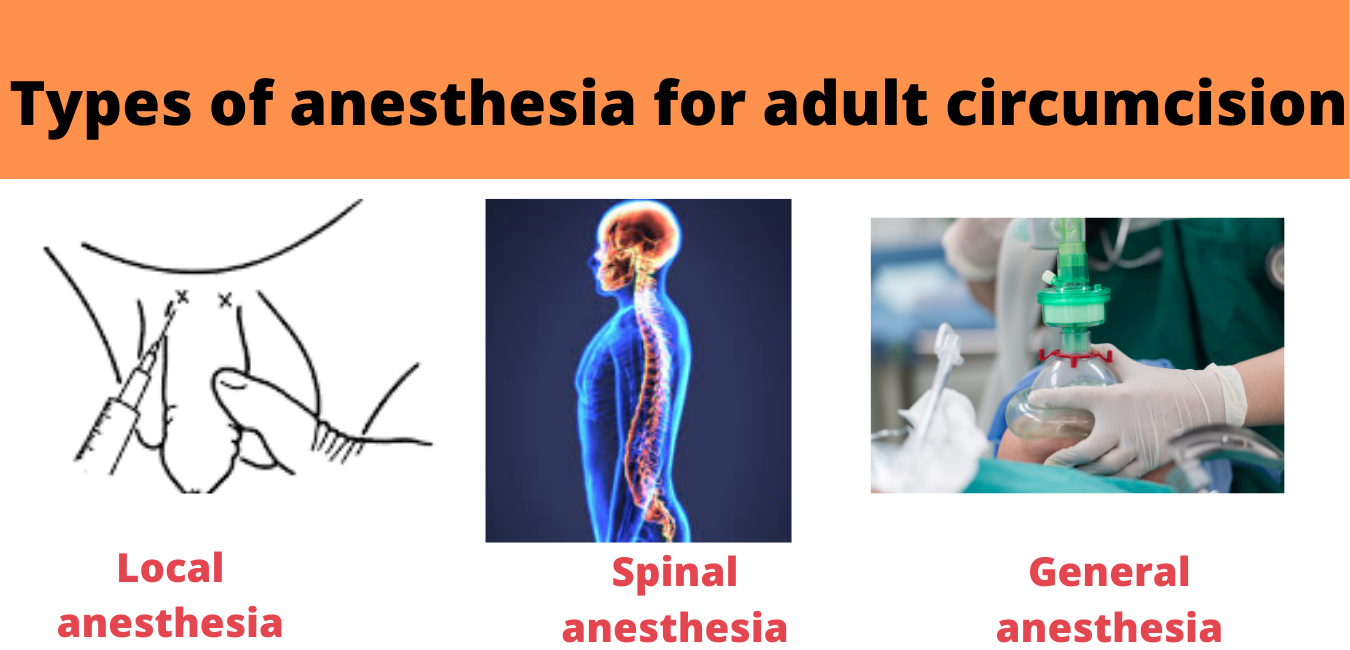
Type of anaesthesia for adult circumcision (khatna)
In adult circumcision (khatna), there are some decisions which any patient has to make. Among these decisions, one is about anesthesia. Logically, it is one of the most critical concerns one should have.
The most common concern is how the surgeon will do it and whether it will be painful. These questions make a patient too worried and anxious. In this post, we will try to address this issue.
Anesthesia for adult Circumcision (khatna)
For a circumcision procedure, any individual has three options:
- Local anesthesia
- Spinal anesthesia
- General anesthesia
Local anesthesia:
In this type, we will work on that area only and will numb the penis. We will give an injection around that area, and it will be numb. For this purpose, we use the smallest needle (27G) available. We will give the injection in a circle around the base of the penis in the skin. You will feel slight pain when you receive the injection but not much pain. The effect of injection usually arrives in 5 minutes. The procedure is painless, and the patient is lying comfortably in bed.
Also, we offer another option which is the use of EMLA cream. This cream is applied around the base of the penis. After this cream, the patient will not feel any pain during local anesthesia administration. The problem with this cream is that it is not readily available in our country and sometimes totally unavailable. We usually get successful in arranging it for our patients. We have to apply it about 2 hours before surgery in that area.
Another benefit of this anesthesia is that you can go home immediately after surgery and no need to stay in the hospital.
Patients most commonly opt for Local anesthesia in adult circumcision (khatna), and the procedure is performed painlessly.
Spinal anesthesia:
In this type, we give the injection at the back (spinal cord), and the lower half of the body is anesthetized. The patient will not be able to move the lower half of the body.
There is a standard procedure for this type of anesthesia. You will have to be admitted to the hospital almost 4 to 6 hours before surgery. The doctor will advise you of some blood tests before admission. Once you come to the hospital, you will be allotted a room. A catheter (cannula) will be applied to your hand. The nurse will give a drip to you. Then we will shift you to the Operation theater. We will pass a needle into the spine (back) and will give an injection through it. You will not be able to move your lower half of the body for the next 6 to 8 hours. Surgery will be performed, and we will shift you to the room. You will stay there until your body movements are back. You may need to stay in the hospital for one night.
General anesthesia:
In this type, we give an injection into the veins (through a cannula at hand), and the patient is given complete/full sedation for the procedure.
There is a standard procedure for this type of anesthesia. You will have to be admitted to the hospital almost 4 to 6 hours before surgery. You will get some blood tests before admission. Once you come to the hospital, you will be allotted a room. A catheter (cannula) will be applied to your hand. The nurse will give a drip to you. Then we will shift you to the Operation theater. An anesthetist will give an injection into your veins. You will be completely sedated. Surgery will be performed, and we will shift you to the room. You will stay there until your all-body movements are back. You may need to stay in the hospital for one night.
We usually give all these options to the patients. Generally, 99% of the patients choose local anesthesia as it is cheaper, more feasible, and you can go home immediately after surgery. We also recommend local anesthesia for this minor procedure.
